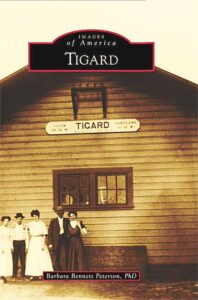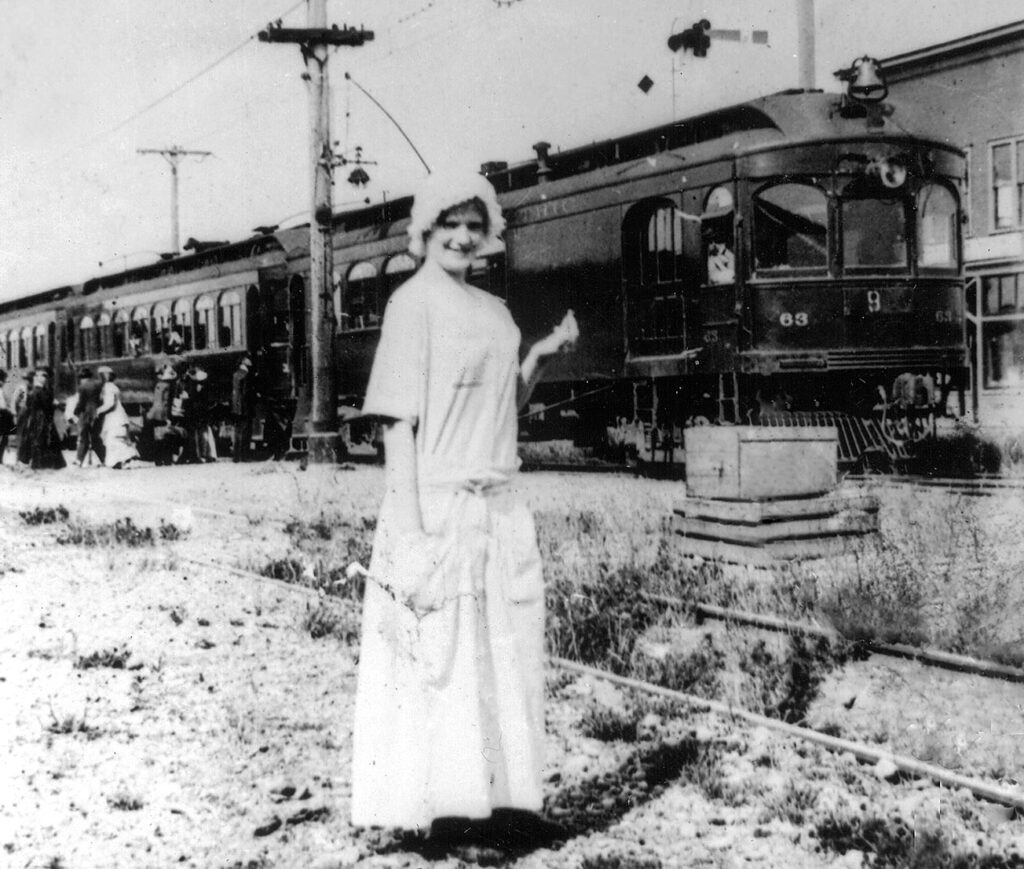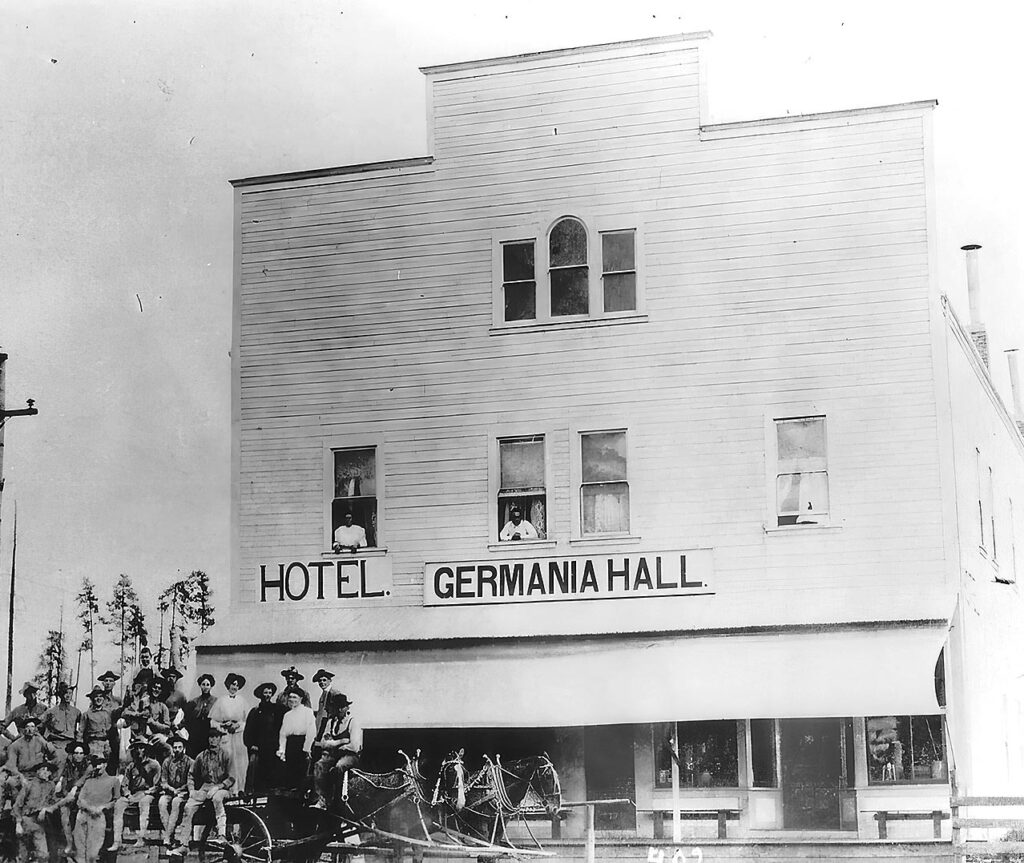The impetus for businesses to be established in Old Town Tigard along Main Street was the coming of the Oregon Electric Railway which began operating on January 1, New Year’s Day, in 1908. The route extended from Portland to Salem by 1908 and was extended to Eugene in 1912. A branch line between Albany and Corvallis opened in 1913. Earlier in 1905 the Willamette Valley Traction Company had been organized to build an electric interurban railway between Portland and Salem with branches planned through communities like Forest Grove and Tigardville. After some initial grading had been done by the Traction company, Henry L. Corbett, R.W. Lewis and Thomas S. Brooks incorporated the Oregon Electric Railway in May of 1906 which completed the electric interurban project. The tracks of the Oregon Electric were to parallel the tracks of the Southern Pacific Railroad through the Willamette Valley.
The Oregon Electric’s rail track had been laid by 1907 and plans were being made to service the railroad as it came through Tigard in 1908. The city of Tigard’s name had been originally East Butte but had been changed in 1886 by Charles Fremont Tigard who was the local postmaster, and he renamed the mailing station to Tigardville after his father Wilson Tigard. Son Charles Tigard ran Tigardville’s post office in his Tigardville General Merchandise Store located on Pacific Highway on the northeast corner of Pacific and McDonald Streets. The community center was to change from Pacific Highway to Main Street with the coming of the railway. With the railway depot on Main Street, what Tigard needed was a hotel to serve the rail customers and this need was answered by Adolph and Anna (Bongartz) Schamoni when they built their new Germania Hall. This was the first business in Old Town on Main Street near the railway depot.
Adolph Schamoni had been born in Geseke in Westphalia, Germany in 1861 and his wife Anna (Bongartz) Schamoni had been born in Essen, Germany in 1868. Adolph originally came as an immigrant to the United States when he was about sixteen and married Anna Bongartz in Kansas about 1887 where he had established a bakery. The Schamonis moved farther west to Portland, then Tualatin, and finally to Tigardville in 1907. Adolph and Anna purchased 3 1⁄2 acres south of the railroad tracks on the east side of Main Street and later added another 9 1⁄2 acres extending their property to Burnham Street. Two-story Germania Hall was opened about 1908 and included a hotel and dance hall upstairs and a grocery store and a restaurant downstairs. Main Street Tigard was unpaved and all lumber to build the structure was hauled in by a four-horse drawn wagon. It was a major project and when completed, was an elegant large structure for its time and became the center of community activity.
Tigardville’s name was shortened to Tigard ca. 1908 after the coming of the Oregon Electric Railway so that local freight would not be lost or confused with the next stop on the rail line – Wilsonville.
Anna Schamoni was an excellent cook for Germania and made chicken pot pies, meatloaf and ham, and potato salad to serve her customers at midnight on the evenings of the dances: the price: 25 cents. Her flaky pie crust was reportedly 3/4ths of an inch thick dripping with thick delicious chicken gravy and the aroma floated out of the hotel’s windows as the best advertisement. She baked her own bread with Adolph sometimes lending a hand recalling his days as a baker in Kansas.

Adolph Schamoni built a large home behind his Main Street properties which included two other buildings on Main Street next door to one another going South. Adolph and Anna Schamoni had four children who lived to adulthood – Josephine, William (Bill), Mary, and Carl and they attended local schools in Tigard and Tualatin. William occupied the second Schamoni building next to Germania Hall which was a quaint barber shop and brother Carl took over the business in 1922. Daughter Josephine bought the third Schamoni building, and she served as the postmistress of Tigard for five years in her store. Adolph and Anna continued to run Germania Hall living close to their children and remained part of their lives. Anna died in 1927 and Adolph died in 1936.
In 1910 James J. Hill owner of the Northern Pacific Railroad purchased the Oregon Electric which became a subsidiary of the Spokane, Portland, and Seattle Railway, and he extended the Oregon Electric railway to Eugene in 1912. The Oregon Electric had introduced urbanization into Tigard and resulted in the development of Old Town. The railway connected Tigard and its farming products with new markets in Portland.
To become a member, volunteer, or for more information about the Tigard Historical Association visit www.tigardhistorical.org.


























